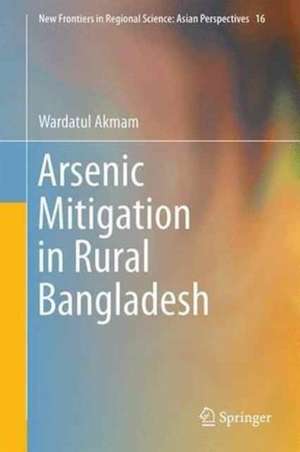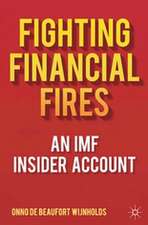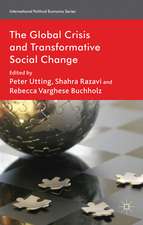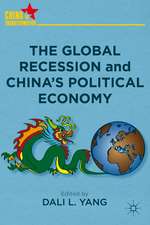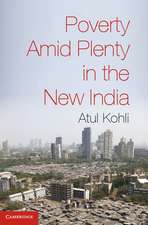Arsenic Mitigation in Rural Bangladesh: A Policy-Mix for Supplying Safe Water in Badly Affected Areas of Meherpur District: New Frontiers in Regional Science: Asian Perspectives, cartea 16
Autor Wardatul Akmamen Limba Engleză Hardback – 12 ian 2018
| Toate formatele și edițiile | Preț | Express |
|---|---|---|
| Paperback (1) | 379.09 lei 43-57 zile | |
| Springer – 7 iun 2019 | 379.09 lei 43-57 zile | |
| Hardback (1) | 386.39 lei 43-57 zile | |
| Springer – 12 ian 2018 | 386.39 lei 43-57 zile |
Din seria New Frontiers in Regional Science: Asian Perspectives
- 15%
 Preț: 652.64 lei
Preț: 652.64 lei - 18%
 Preț: 742.00 lei
Preț: 742.00 lei - 15%
 Preț: 645.96 lei
Preț: 645.96 lei - 18%
 Preț: 798.18 lei
Preț: 798.18 lei - 18%
 Preț: 728.74 lei
Preț: 728.74 lei - 18%
 Preț: 724.14 lei
Preț: 724.14 lei - 18%
 Preț: 733.33 lei
Preț: 733.33 lei - 15%
 Preț: 693.25 lei
Preț: 693.25 lei - 15%
 Preț: 640.06 lei
Preț: 640.06 lei - 15%
 Preț: 702.87 lei
Preț: 702.87 lei - 15%
 Preț: 718.61 lei
Preț: 718.61 lei - 18%
 Preț: 786.36 lei
Preț: 786.36 lei - 18%
 Preț: 1110.72 lei
Preț: 1110.72 lei - 15%
 Preț: 644.18 lei
Preț: 644.18 lei - 18%
 Preț: 787.78 lei
Preț: 787.78 lei - 15%
 Preț: 699.45 lei
Preț: 699.45 lei - 18%
 Preț: 897.47 lei
Preț: 897.47 lei - 15%
 Preț: 643.34 lei
Preț: 643.34 lei -
 Preț: 395.25 lei
Preț: 395.25 lei - 18%
 Preț: 892.42 lei
Preț: 892.42 lei - 24%
 Preț: 594.42 lei
Preț: 594.42 lei - 18%
 Preț: 900.31 lei
Preț: 900.31 lei - 15%
 Preț: 714.02 lei
Preț: 714.02 lei - 15%
 Preț: 698.62 lei
Preț: 698.62 lei - 24%
 Preț: 632.78 lei
Preț: 632.78 lei - 18%
 Preț: 1244.59 lei
Preț: 1244.59 lei - 15%
 Preț: 644.63 lei
Preț: 644.63 lei - 18%
 Preț: 785.42 lei
Preț: 785.42 lei - 15%
 Preț: 639.73 lei
Preț: 639.73 lei -
 Preț: 357.81 lei
Preț: 357.81 lei - 18%
 Preț: 1111.53 lei
Preț: 1111.53 lei - 18%
 Preț: 721.33 lei
Preț: 721.33 lei
Preț: 386.39 lei
Nou
Puncte Express: 580
Preț estimativ în valută:
73.94€ • 77.39$ • 61.54£
73.94€ • 77.39$ • 61.54£
Carte tipărită la comandă
Livrare economică 31 martie-14 aprilie
Preluare comenzi: 021 569.72.76
Specificații
ISBN-13: 9784431551539
ISBN-10: 4431551530
Pagini: 150
Ilustrații: XXIV, 113 p. 33 illus., 23 illus. in color.
Dimensiuni: 155 x 235 mm
Greutate: 0.38 kg
Ediția:1st ed. 2017
Editura: Springer
Colecția Springer
Seria New Frontiers in Regional Science: Asian Perspectives
Locul publicării:Tokyo, Japan
ISBN-10: 4431551530
Pagini: 150
Ilustrații: XXIV, 113 p. 33 illus., 23 illus. in color.
Dimensiuni: 155 x 235 mm
Greutate: 0.38 kg
Ediția:1st ed. 2017
Editura: Springer
Colecția Springer
Seria New Frontiers in Regional Science: Asian Perspectives
Locul publicării:Tokyo, Japan
Public țintă
ResearchCuprins
Chapter 1: Introduction.- Chapter 2: Opinions of Experts on the Cause of Contamination. Chapter 3: Social Survey in the Study Area.- Chapter 4: Available Safe Water Options.- Chapter 5: A Model for Attaining Guidelines to Select Optimal Safe Water Option(S) and to Specify Their Locations.- Chapter 6: Simulation Results.- Chapter 7: Mechanisms To Convince People to Adopt Safe Water Options.- Chapter 8: A System For Providing Safe Water.- Chapter 9: Taranagar From 2000 To 2012: Changes in Arsenic Related Situation.- Chapter 10: Conclusions.- Appendices.
Textul de pe ultima copertă
Based on micro-level empirical research, this book uniquely addresses the problem of arsenic contamination in ground water in Bangladesh in a comprehensive way. At the outset, the book puts forward the opinions of experts regarding the cause of arsenic contamination in ground water in Bangladesh, followed by sample surveys depicting socioeconomic and arsenic-related situations in three arsenic-affected villages in Meherpur district, Bangladesh. The major contribution of the author is the mixed-integer Pareto optimality model (tested and proved through computer simulation), developed in order to supply safe water to the badly affected people in Taranagar village. The model takes into account such issues as the costs of different safe water options, exposure to arsenic and bacteria, distance of the water source from home, indigenous cultural traits, environmental safety and acceptability of the options to the people. Besides successful development and application of the model, the book outlines ways to persuade people to change their habits regarding drinking tube-well water and proposes a system through which safe water can be supplied to Taranagar village. The book emphasizes socioeconomic, environmental and administrative aspects of selecting an optimal safe water option and ensuring consumption from safe water sources, which can be tested for other arsenic-affected areas as well. With relevant, attractive charts, tables, graphs, flowcharts and other graphics and with lucid language, the book makes rather difficult theoretical economics issues easily comprehensible and interesting to general readers, graduate and undergraduate students, researchers and NGO/GO workers who are dedicated to providing safe water to people affected by arsenic contamination.
Caracteristici
Addresses arsenic contamination in ground water in Bangladesh, which has been termed “the worst mass poisoning in history” Presents a unique combination of a mixed-integer optimal model tested by computer simulation with thoughtful recommendations Emphasizes socioeconomic aspects of selecting an optimal safe water option and ensuring consumption from safe water sources
